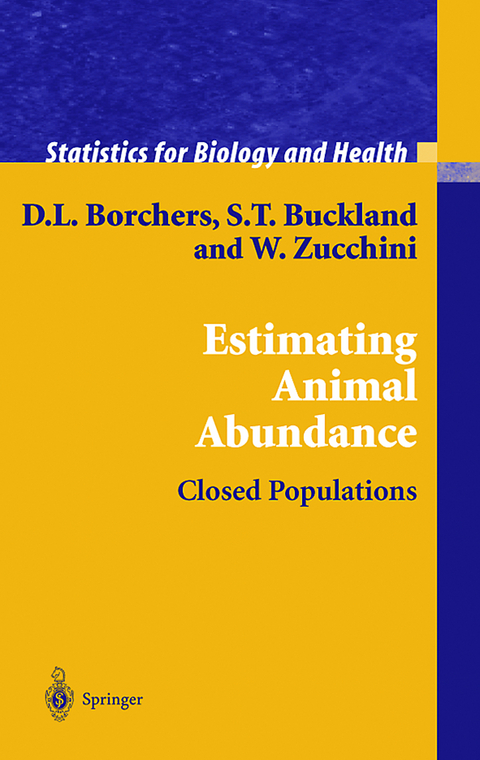
Estimating Animal Abundance
Springer London Ltd (Verlag)
978-1-85233-560-1 (ISBN)
1 Introduction.- 2 Using likelihood for estimation.- 3 Building blocks.- 4 Plot sampling.- 5 Removal, catch-effort and change-in-ratio.- 6 Simple mark-recapture.- 7 Distance sampling.- 8 Nearest neighbour and point-to-nearest-object.- 9 Further building blocks.- 10 Spatial/temporal models with certain detection.- 11 Dealing with heterogeneity.- 12 Integrated models.- 13 Dynamic and open population models.- 14 Which method?.- A Notation and Glossary.- A.1 Notation.- A.2 Glossary.- B Statistical formulation for observation models.- B.1 Detection function.- B.2 Multiple surveys.- C The asymptotic variance of MLEs.- C.1 Estimating the variance of an MLE.- C.2 Estimating the variance of a function of an MLE.- C.3 A one-parameter example.- C.3.1 Fisher information version 1.- C.3.2 Fisher information version 2.- C.3.3 Observed information.- D State models for mark-recapture and removal methods.- D.1 Static population.- D.2 Independent dynamics.- D.3 Markov dynamics.- References.
| Erscheint lt. Verlag | 27.9.2004 |
|---|---|
| Reihe/Serie | Statistics for Biology and Health |
| Zusatzinfo | XIII, 314 p. |
| Verlagsort | England |
| Sprache | englisch |
| Maße | 155 x 235 mm |
| Themenwelt | Mathematik / Informatik ► Mathematik ► Angewandte Mathematik |
| Naturwissenschaften ► Biologie ► Ökologie / Naturschutz | |
| Naturwissenschaften ► Biologie ► Zoologie | |
| ISBN-10 | 1-85233-560-2 / 1852335602 |
| ISBN-13 | 978-1-85233-560-1 / 9781852335601 |
| Zustand | Neuware |
| Haben Sie eine Frage zum Produkt? |
aus dem Bereich


